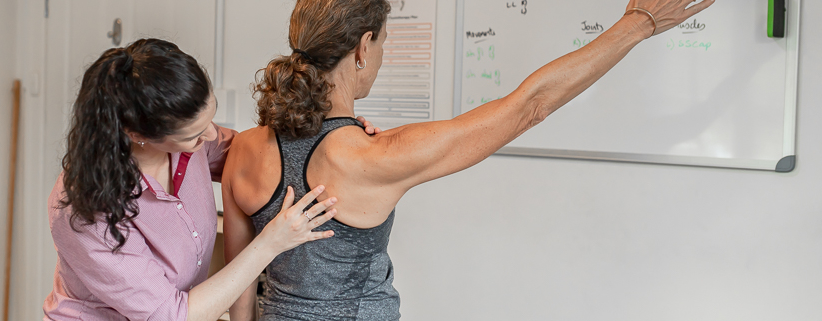Shoulder and the Rotator Cuff
Shoulder Joint Anatomy
The shoulder is known as a ball and socket joint and is made up of three bones: the humerus, scapular and clavicle. The humerus is stabilised in your shoulder socket through your rotator cuff. The rotator cuff is a group of four muscles that merge together as tendons to wrap around the head of the humerus . As the tendons assist in the rotation of your shoulder they are therefore named the rotator cuff. The four muscles of the rotator cuff are supraspinatus, infraspinatus, teres minor and subscapularis.
What is the Bursa and Bursitis?
In the shoulder joint there is a sac called the bursa which is located between the rotator cuff muscles and the bony top of the shoulder (acromion). The anatomy of the bursa helps the rotator cuff tendons to move freely with shoulder movements with decreased friction. In some instances when the rotator cuff tendons become irritated they can cause the bursa to become inflamed and painful. On imaging this irritation can present as bursitis of the shoulder joint.
What is a Rotator Cuff Tear?
Whilst the rotator cuff is a group of four strong muscles, they can be exposed to injury due to their constant use. A rotator cuff injury could be due to and external force (i.e. sporting injury) or the natural aging of the muscles.
It is important to note that as we age the risk of rotator cuff tears increase due to the constant repetitive strain that is placed on our shoulders. Research shows that 40% of the population over 60 years will have some form of rotator cuff tear but still be asymptomatic (pain free).
If you have pain
If however, you do develop symptoms from the tear which can include but isn’t limited to; loss of range of motion, loss of strength or pain, your physiotherapist can determine a suitable treatment plan to help you can regain your shoulder function .
To maintain the strength and range of motion in your shoulder it is important that tears be identified before they progress and cause more irritation. A physiotherapy treatment plan may include a combination of manual techniques, pain relief and exercises to strengthen the muscles.
If you or someone you know is experiencing any muscle joint or possible nerve irritation please contact us. We can determine if it is a musculoskeletal issue before having to see a GP. We are open 5 days a week and a couple Saturdays a month. We have early and late appointments available. Please call us at 1300 842 850 or Click here to book an appointment.








Leave a Reply
Want to join the discussion?Feel free to contribute!